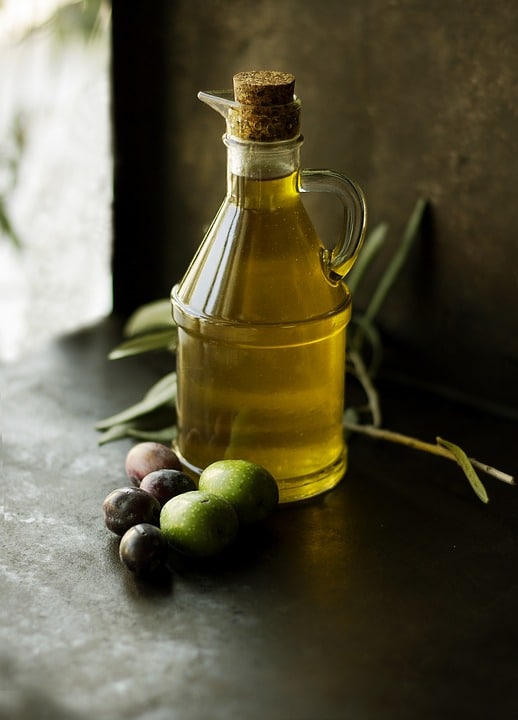
This post was last updated on August 9, 2022 by Preethi Sukumaran A common question we get asked at Krya is about healthy eating timings & habits to follow and meal choices at each time. Today, the media is charged with advice on nutrition and the importance of developing healthy eating habits. Often, these so-called studies also become quite contradictory, and we naturally start looking for some genuine and time tested guidance on on ahara (food) and ahara niyama (dietary practices to observe). A key part of ahara niyama (or healthy eating habits) in Ayurveda is to identify the proper/healthy time to eat. This influences our capacity to digest food and extract nutrients from the food. In fact, choosing the correct time to eat each meal has the same effect on our health as choosing what to eat. In other words, we should spend the same amount of time planning when to eat as planning what to eat. In this post, we are going to see why Ayurveda pays so much attention to meal timing and how this is a key part of developing healthy eating habits. Planning healthy eating schedule: Different doshas influence different dayparts Ayurveda tells us that each day is divided into 4-hour dayparts. Each of these dayparts is connected to the slow rise, peaking, and then falling of a particular dosha in our body. The strength of the surge in the dosha depends upon the movement of the Sun. For example, if there is sunshine during the kapha period, the effect of kapha will be slightly reduced. Similarly, if there is good sunshine, say during a pitta part of the day, pitta will be much more aggravated due to the influence of the Sun. In order to take advantage of these natural surges in a particular […]
This post was last updated on August 19, 2021 by Preethi Sukumaran The Abhyanga is a key Dinacharya, daily practice recommended in Ayurveda to impart Bala (strength), Ayush (health and Immunity) and Ayu (long life) to the body. This practice forms an important part of Krya’s recommendations to improve hair growth, impart better strength and texture to hair and to also improve the quality, tone and texture of skin. An abhyanga is also a very important Dincharya that is recommended for specific cases of hairfall like post partum hairfall, hairfall due to sudden and extreme weight loss (cases of high vata aggravation). Many Krya consumers have found a HUGE difference to their hair health, skin texture and overall well being and immunity when abhyanga is added to their daily routine. The practice of abhyanga is mentioned as a health giving practice in all the Ayurvedic Samhitas. In today’s post, we will analyse the abhyanga shloka in Ashtanga Hridayam’s Dinacharya chapter and see why Acharya Vagbhatta says this is such an important and useful practice. Ashtanga Hridayam: part of the Brhat Trayee Texts in Ayurveda We have written often about how empowering Ayurveda is as a Vaidya shastra. Ayurveda is considered an UpaVeda, an offshoot of the vedas themselves and is found in the Atharva Veda. This Upa Veda is a Divine Science which has been handed down from the Devas to the Raja Rishis. It was then passed down in oral tradition until it was compiled about 3000 – 4000 years ago by Agnivesa. Agnivesa’s Samhita, was then further redacted by Charaka. Charaka’s redaction of Agnivesa Samhita became much more famous than the original, and soon everyone began to refer to Charaka’s redaction as the Charaka Samhita. Charaka Samhita forms the first of the Brhita Trayee. The second text in […]

This post was last updated on August 5, 2023 by Preethi Sukumaran According to Ayurvedic seasonal guidelines, Vasanta / spring is now here – so we must all be following Vasanta Ritucharya – modified seasonal guidelines for Spring. If you have already begun to sniffle, sneeze and look desperately for tissues, this season change may have already caught you unawares. One of the most powerful concepts in Ayurveda medicine is the concept of Ritucharya – seasonal regimens to be followed to naturally balance the changes in your doshas due to the change in climate and season. As we have seen in other posts on Ritucharya and Dinacharya, following daily living guidelines or Dinacharya and adjusting these guidelines in every season, or Ritucharya are 2 key ayurvedic cornerstones to good health. When we regularly follow the guidelines of Dinacharya and Ritucharya and also ensure that our choice of Ahara (food) and the way we prepare and eat this food is according to our prakriti, we ensure we are in a state of harmony and balance. This is the Ayurvedic concept of preventive health care. Ayurveda: unique concept of preventive health care Ayurveda’s goal is to prevent the formation of disease by following certain guidelines of good living. This is best described by Acharya Charaka in his Sutra Sthana shlokas: “Swasthasya Swasthya Rakshanam Aaturasya Vikara Prashamanam Cha” He explains that the goal of medicine (Ayurveda) is to rejuvenate and preserve the health of the healthy and then to alleviate diseases in the ill. This order of first tending to the healthy and then treating the sick is specific to Ayurveda. It explains why so much of Ayurveda is primarily focused on health giving regimens rather than disease treatment . This emphasis on preserving health is why Dincharya and Ritucharya regimes (regimes for […]
This post was last updated on August 19, 2021 by Preethi Sukumaran Due to the high use of electronic devices, and excessive eye engagement, many of us commonly face eye strain & eye fatigue. We have recently been receiving a lot of queries on tackling eye fatigue and improving vision through Ayurveda. So we have re-written and expanded one of our earlier posts on this subject. This post will explore how you can easily & visibly reduce eye fatigue & eye strain with Ayurveda . Do you have eye strain? Do you constantly feel eye fatigue? Do you develop headaches after a long bout at your computer? Are you experiencing premature greying and hair dryness? Do your eyes feel dry, scratchy and itchy? You could be experiencing computer vision syndrome / computer related eye strain. Eye strain is a real and wide-spread problem today, which affects both children and adults. For several hours every day, we stare at electronic screens across phones, tablet, TV and computers. As we continually use our eyes for subtle / sookshma purposes, we strain the minute eye muscles and do not allow them a chance to recover or relax. So we are all affected with eye strain to varying degrees. The symptoms are blurred vision, double vision, dry eyes, headaches, eye pain, neck strain, eye-irritation and eye watering. The factors that induce eye strain are the number of hours of screen-time, the size of the screen, the strength of your vision, light levels and posture. Causes for Eye Strain as per Ayurveda : It is astonishing that our ancient Ayurvedic texts are able to give us a rationale behind a seemingly modern problem. Acharya Sushruta tells us that all Netra Rogas (diseases of the eye), occur due to the following causes: Imbalance of hot […]

This post was last updated on July 21, 2022 by Preethi Sukumaran Parents frequently write to us at Krya asking if using olive oil for baby massage is a good practice and what Ayurveda feels about this. With our worlds being opened up everyday and many of us being seasoned travelers, we come across many new, exciting plant oils and butters from around the world. All of them come with excellent nutritional benefits, and seem like they would be very good for skin. So how do we decide which oil to use while giving our baby a massage? To choose the right oil, we must first understand WHY we are asked to give baby a regular abhyanga-snana or oil massage followed by the bath by Ayurveda. Benefits of a regular baby abhyanga / baby oil massage: Ayurveda advises that we give baby a regular Abhyanga with special medicated oils and then follow it with an ayurvedic snana that is performed with special Ayurvedic herbs. The Abhyanga is to be done until the child is atleast 1 year of age, or even older. At each stage of the child’s life, the Abhyanga gives special benefits to the child. In the first 3 months of the child’s life, the Abhyanga helps remove aches and pains from the ordeal of childbirth. It builds additional immunity to the child’s body through the use of special ayurvedic herbs. It also helps the development of the child’s sensory organs and helps create a loving bond between the Mother and the child. As the child begins to turn, hold its neck in position, crawl, etc, the Abhyanga lends strength and aids the correct development of the child’s musculo-skeletal system. When special Ayurvedic oils that have been processed via Tila Paka method are used, the […]

This post was last updated on April 24, 2023 by Preethi Sukumaran At Krya, we are often asked to describe in detail what the ayurvedic baby care practices are to be followed at home. We are also asked what the science / rationale behind some of these practices are. This is specially asked because in today’s day and age, many traditional baby care practices are being rejected by attending Pediatricians for many reasons. The foremost reason being there is a simple lack of awareness as to why these practices were instituted and the benefits behind the herbs, metals and dravyas which are used in Ayurvedic baby care. Indian traditional medicine is highly advanced in its thought process and concepts suggested in many fields. However, due to oral transmission of texts, repeated invasions and the strong promotion of a Westernised concept of Education, we have lost both the language needed to interpret these texts (Sanskrit) and a large portion of the texts themselves. Even what is remaining to us, (a fraction of a fraction of a fraction) if followed even to a small extent, can greatly improve the health, well being and outlook of both the baby and the post partum Mother. To speak about these practices will require more than 1 post. We will start in this post by talking about a few practices, and then build it from there. Mother & baby in seclusion: ayurvedic baby care practices to improve health and reduce infections Ayurveda frowns upon the frequent disturbance of the new Mother & baby. Both of them are said to be recovering from a great ordeal. In the case of the mother, due to the nature of pregnancy and child birth, she is greatly weakened. As the baby is extremely young and organ systems are still not […]





